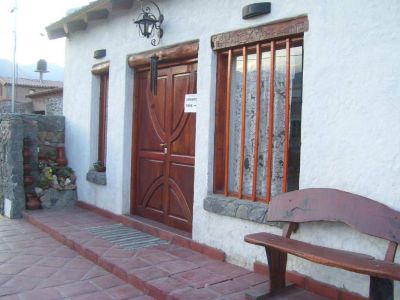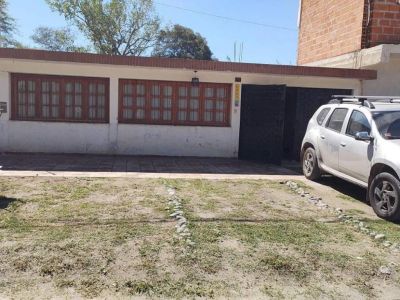Alemanía and Its Ghost Train
Though forgotten by classical tourist routes, Alemanía is a beautiful mountain village that still preserves stories intact from the times of the railway, the demoniacal festivals and the gold prospectors. A must.
The construction of the C-13 branch line was a consequence of the need to connect Salta and the main rail gauge built by the State. This was completed in 1892. A few years later, it was found convenient to extend this railroad through the fertile valley. This represented an important benefit for the local population and the agricultural and cattle activities. Just like the Mojotoro Ravine pass had permitted access to the Lerma Valley (Salta), the Las Conchas Ravine pass would enable the railroad to enter the Calchaquí Valleys, with a main settlement in Cafayate. That was the direction taken by the Northern Central Railroad. The small setllement called Alemanía would be its head station. Several roads would join that point and Cafayate, where the first vineyards of Torrontés grapes were being planted. Between 1916 and 1920, Alemanía had a moment of splendor few mountain villages have ever experienced. An Argentinian Far West The construction of the branch line to Salta, and of all the other branch lines that would come next and join the provinces in the Argentinian North with various destinations in Chile caused hundreds of people to settle down in the small village and take part in the railway expansion. It is said that expectations had turned the village into the Far West, where contractors and subcontractors would become millionaires every time they signed an agreement to extend the railroad lines; that everything was done by hand by groups of dozens of workers; that festivals lasted for several days on which hundreds of revolver bullets were shot to the air; and that it was easier to get wine than fresh water in this area. Such was the madness and amusement of those days that several gold and silver prospectors from Bolivia and Upper Peru began to arrive in the area to work at the railroad, the new name of gold in these latitudes. This promising business would spread quickly encouraged by the national government. This unbounded growth brought along all kinds of excess, vice and earthly pleasures which immediately led to considering the place and its dwellers to have made a pact with the Devil. For many people, Alemanía was “possessed”. War and Peace The boom and the excesses came to an end when the First World War began and works were interrupted. The, the decline began. Agreements to extend the branch line were paralized and expectations and great investments began to search for other destinations. By 1920, railroad activities were resumed. However, this did not benefit Alemanía and the projected branch line to the Calchaquí Valleys was never completed. Nevertheless, the trains continued arriving in Alemanía until 1971, when the Cerrillos-Alemanía branch line was definitively canceled. But it was never the same. The village was thrown into oblivion and was abandoned in time, like a ghost town. So many sensations are awakened by this town that tourists spend hours walking along its streets, visiting its old station and the empty houses while they chat with some of the few settlers that still remain. Today, although the railroad has been damaged by the flooding from the surrounding rivers, some people claim they can still hear the rail vibrations and the popular hubbub of the old days whenever a train arrived. And it is true: there are places where it is still possible to believe in ghosts.
Pablo Etchevers
Pablo Etchevers



































